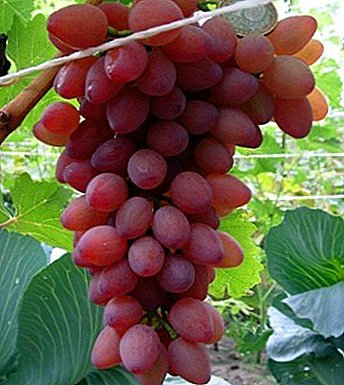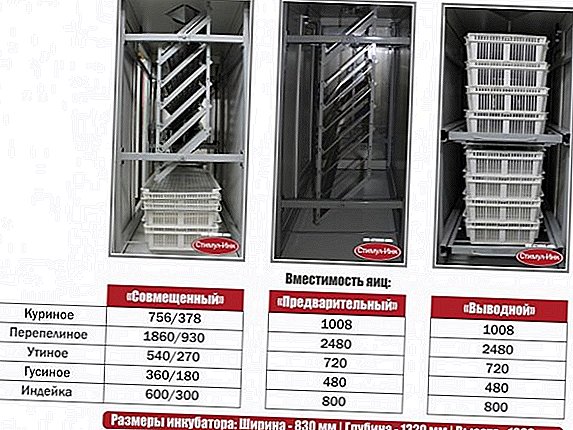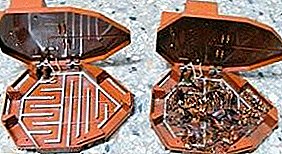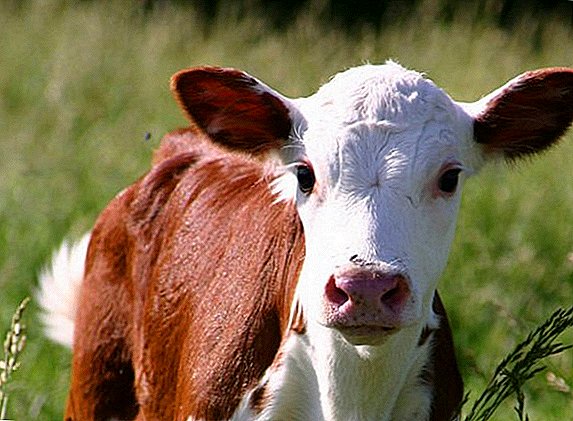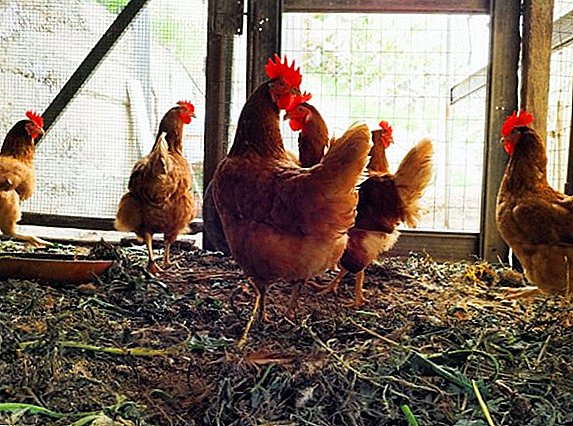 Seasonal fluctuations of daylight can bring down the regime or even stop the process of laying eggs. In order to avoid problems, it is better to immediately accustom the birds to a permanent, for example, at least 14-hour mode. Which lamps and modes for the artificial extension of daylight is better to use - consider further.
Seasonal fluctuations of daylight can bring down the regime or even stop the process of laying eggs. In order to avoid problems, it is better to immediately accustom the birds to a permanent, for example, at least 14-hour mode. Which lamps and modes for the artificial extension of daylight is better to use - consider further.
Features of daylight for chickens
To accustom to a stable daylight hours, regardless of the season, you need to start from the very beginning, since the hens of egg breeds begin to sweep already from 4 - 4.5 months, and meat-egg breeds in 6 - 6.5 months. At the same time constantly keeping them in bright light is a big mistake. 
The length of daylight in laying hens affects the following processes:
- quantitative productivity of egg production;
- quality productivity, namely: the weight of the egg, the size and thickness of the shell;
- growth and maturation processes of brood chickens.
- full rest of the bird;
- animal pain, metabolic processes;
- mass of chicken carcass.
Proper lighting in the hen house
The normal light intensity in the hen house should be 6 W / m 2, and it should be distributed evenly over the whole area of the room. It is recommended to place the lamp at a height of 1.8 - 2.2 m from the floor. In the "off season", it is worth turning on the lights and turning them off later, providing up to 14 hours of continuous lighting.
And on very bright and sunny days, it is necessary to even shade the chicken coop, since the excess of light not only reduces the productivity of the hens, but there are also cases of egg-pitting, cannibalism in birds, aggression and increased trauma.  Lighting in the room where mature individuals live should be from 10 to 15 suites, in the parent livestock - at least 15 suites, in this light, the roosters show healthy activity. But coverage above 20 lux is dangerous as it provokes aggressive behavior.
Lighting in the room where mature individuals live should be from 10 to 15 suites, in the parent livestock - at least 15 suites, in this light, the roosters show healthy activity. But coverage above 20 lux is dangerous as it provokes aggressive behavior.
Did you know? The suites are the luminance metering unit adopted by the International System of Units (SI). It corresponds to the amount of light falling on a surface of 1m2 equal to 1 lm.Turning on and off the light should be without sudden drops, so the animals are synchronized with the mode, and their metabolic processes are established within the framework of such a format for changing artificial day and night.
What lamps are suitable for a chicken coop
Observing and experimenting with light modes and different lamps, it was noted:
- lamp use blue light it has a calming effect on livestock and significantly reduces aggression in behavior;
- blue green light contributes to more intensive maturation of young (chickens);
- Orange - accelerates their puberty;
- Red light helps to reduce aggression and cannibalism, but also reduces the egg production rate of the bird.

Did you know? Nature is designed so that the chicken does not see well in the dark, but is very dependent on the intensity of light radiation, much more sensitive than mammals. Receiving a signal about the intensity of light, the brain sends signals to all systems and organs, regulating sleep, appetite, growth, procreation. That is, most of the natural processes of the chicken can be adjusted and directed by light.Most often, specialized farmers and farms use lamps with white light and a twinkling effect, not exceeding 26,000 Hz (more - it affects the eyes of the hens). Light sources should be placed at the same distance from each other, for the same intensity of illumination of the area. 60 W lamps are the best choice.
There is a positive experience with the use of sodium lamps. The peculiarity of such light sources is that their intensity is less than 50 W and activate them parallel or alternately. And such a soft coating of light practically excludes darkened, unlit corners and places.  Sodium lamp When carrying out communications, it is desirable to minimize cable use, since wet floor and other factors can cause a short circuit, and this is a threat to livestock life. Flap set outside the premises for the birds. So that pets are not injured, often lamps cover the shades.
Sodium lamp When carrying out communications, it is desirable to minimize cable use, since wet floor and other factors can cause a short circuit, and this is a threat to livestock life. Flap set outside the premises for the birds. So that pets are not injured, often lamps cover the shades.
Independently manufacture a chicken coop at your summer cottage, equip it, make a beautiful design, ventilation, floor and lighting.
Day regimen for egg production
We have already noted that the continuous light mode accelerates the puberty of the flocks and, therefore, the egg-laying period starts faster. Light stimulation can be started only after the young / chick reaches a live weight of 1.27 kg. If you start earlier, the size and standards of eggs, as well as their shelf life will not meet the standards.  That is, on the one hand, daylight and accelerates the start of the productive period, on the other hand, normal natural maturation may fail, lagging behind physical development. As a result, egg laying may be small or without a shell at all.
That is, on the one hand, daylight and accelerates the start of the productive period, on the other hand, normal natural maturation may fail, lagging behind physical development. As a result, egg laying may be small or without a shell at all.
Did you know? D. King has developed a program of constant lighting in closed types of chicken coops. Thanks to her, she managed to raise the egg production of hens to 60 eggs per head per year. - Such a quick result could not reach a single breeding program during the entire history of agricultural animal husbandry.Up to the age of 10 weeks, light changes have little effect on pullet. Critical period of laying hens from 10 to 16 weeks. It is very important to monitor the uniformity of the artificial light time.
Intermittent lighting for laying hens
Intermittent lighting is considered effective and economical. This type has become widely used in the poultry industry. It contributes to an increase in egg production, prolongs the productive period of the hen, and the egg meets the standards, including the weight and strength of the shell. At the same time, energy costs, flocks and the amount of feed consumed are reduced. It is suitable for all breeds of chickens. Although if during puberty intermittent mode was applied, then it should be applied permanently.  Intermittent mode is not based on the duration of the total lamp burning time, but on the time the light source is on and off. On this basis, it is divided into two types:
Intermittent mode is not based on the duration of the total lamp burning time, but on the time the light source is on and off. On this basis, it is divided into two types:
- asymmetric;
- symmetric.
Important! D. King conducted experiments with intermittent lighting modes and caught the main regularity of this type of extending the day length - it is important not the total lamp burning time, but the gradual light effect on the hen's organism, starting from the chicken period to the withdrawal due to the end of the bird's productive period.
Asymmetric intermittent lighting
The asymmetric regime is perceived by the feathered flock as a regular change of day and night, where there is a clear boundary. Therefore, in case of emergency shutdown of the light source, the bird does not fall into stress and does not fall asleep. Everything happens on time. In this mode, the efficiency of the hens increases and the amount of feed consumed decreases, the synchronization of the egg-laying of the entire herd is observed, that is, on average, about 80% of eggs are demolished during the so-called artificial day.
This option of light exposure is increasingly finding its use in egg production. Separately need to say about the feed. With intermittent type of lighting 40-50% of the total mass of feed eaten in the dark. Since the hens are practically not subject to stress, they scatter feed less, and the food is better absorbed.  Therefore, it is rational to set 25-30% of feed to animals before bedtime. Calcium in the feed is absorbed 12 hours. If you give it in the daytime - then at 2:00 am (this is the period when the shell forms in the body shell), it will be completely digested and bred.
Therefore, it is rational to set 25-30% of feed to animals before bedtime. Calcium in the feed is absorbed 12 hours. If you give it in the daytime - then at 2:00 am (this is the period when the shell forms in the body shell), it will be completely digested and bred.
Symmetric intermittent lighting
The second type does not have a clear border light mode. The process of egg production lasts 24 hours, it reduces the productivity of the flock, but significantly improves the quality indicators of the product at the exit - eggs. And a decrease in productivity along the line of egg production automatically contributes to an increase in the total body weight of the hen. This option is actively used in the meat and egg direction when growing broiler chickens.
Important! For laying productivity, the most rational option is to artificially extend the day length from 14 to 16 hours.
How to translate into intermittent lighting
It is possible to translate into an intermittent type of artificial day at any stage of the productive period of the population. The main thing is to observe the mode: after dark, the first turning on of the lamp should be no later than with constant illumination, and even better - 2-3 hours earlier. Feed set before the evening light off. Comprehensibility increases, and the feed is scattered less. The strongest shells of eggs, which were formed from calcium, obtained from a source of feed. With a lack of calcium in the body of the hen, calcium from the poultry bone system is used.  For breeding birds, which are kept on the floor principle, intermittent type of lighting is not suitable - laying hens do not use nests, and most eggs are dirty. But for areas with a hot climate - an intermittent type of prolonging daylight hours is a godsend. In the hottest time of day, feed intake, and, consequently, egg production significantly reduced. Lighting in the evening and night periods helps to smooth out the difference in the negative effects of temperature.
For breeding birds, which are kept on the floor principle, intermittent type of lighting is not suitable - laying hens do not use nests, and most eggs are dirty. But for areas with a hot climate - an intermittent type of prolonging daylight hours is a godsend. In the hottest time of day, feed intake, and, consequently, egg production significantly reduced. Lighting in the evening and night periods helps to smooth out the difference in the negative effects of temperature.
Find out why chickens rush badly and how to increase chicken production in the winter.
An individual mode of intermittent lighting is selected for each situation, goal and climate. None of them can be universal, as many additional factors affect the performance. With properly selected lighting mode, it has been proved in practical terms how the productivity of a layer increases. They carry eggs every day or every other day, and their productive period can be saved all year round.




